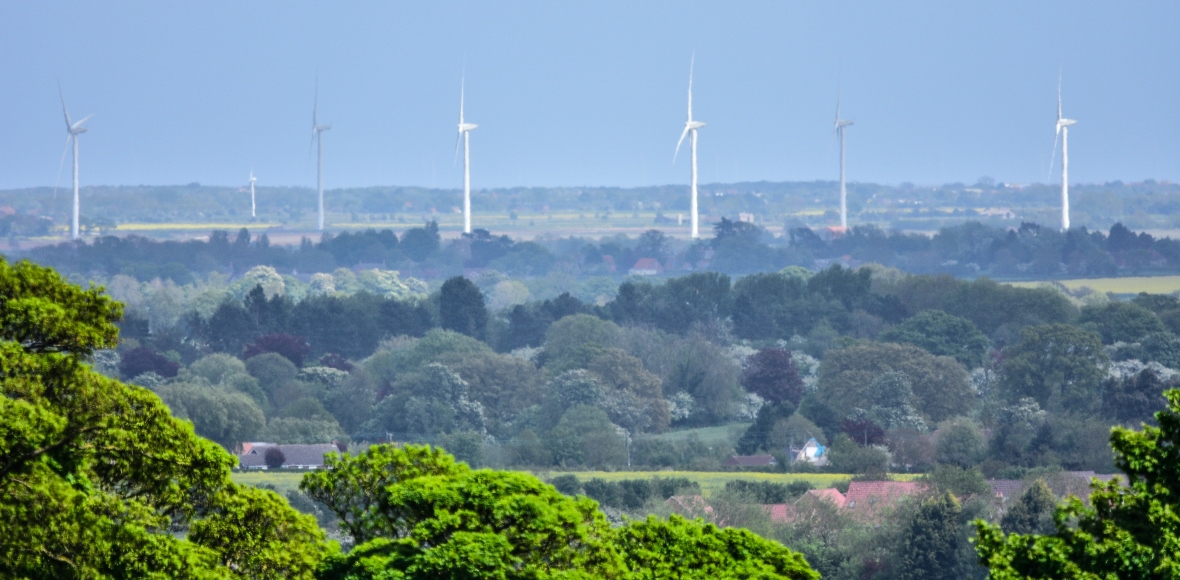
There are three Local Planning Authorities (LPA) who are responsible for planning applications within the AONB boundary;
North East Lincolnshire Council, East Lindsey District Council and West Lindsey District Council.
It is these organisations that create the planning policies that apply to the AONB, and also determine planning permissions within the AONB via their respective Local Plans. If you have any concerns or questions regarding planning policy or a planning application, you should contact your LPA for advice and guidance. Highways, minerals and waste planning matters are dealt with separately by Lincolnshire County Council and North East Lincolnshire Council respectively.
The primary purpose of AONB designation is to ‘conserve and enhance' the natural beauty of the landscape. The Government has recognised that AONBs are equivalent in planning status to National Parks, in terms of their landscape quality and scenic beauty and this is reaffirmed in the National Planning Policy Framework.
The Countryside and Rights of Way Act 2000 gives LPAs a legal duty to have regard to the conservation and enhancement of the AONB in carrying out planning and other functions. This includes any applications assessed at a county or national level, including infrastructure and utilities.
The Role of Lincolnshire Wolds Countryside Service (LWCS)
LWCS fulfils the councils' statutory duty to consult, produce and review a Management Plan for the designated area. This Management Plan is an agreement by the Joint Advisory Committee on how the AONB will be managed over a 5 year period. The Management Plan also outlines the AONB's goals, objectives and policies.
Lincolnshire Wolds AONB is a supporting consideration in planning matters. This means the Local Planning Authority needs to consider Lincolnshire Wolds AONB Management Plan policies and objectives when deciding on a particular planning application.
On a day to day basis, LWCS and Natural England are often invited to comment on proposals that require planning consent within the AONB, or may affect the designation. The LWCS seeks to review all applications within or affecting the AONB. Some applications will be of such a small scale or raise little concern that no comment will be made. For larger scale or contentious proposals a full assessment and site visits are undertaken and comments are submitted to the LPA. These comments are publicly available and online along with comments made by all respondents.
Resources allowing, LWCS may offer pre application advice for anyone wishing to develop or undertake any works within the AONB. All advice is without prejudice to any future planning applications.
For more information about AONB planning advice, please contact the LWCS 01522 555780.
Frequently asked questions:
Is the AONB designation likely to affect my proposed development?
Planning applications in the AONB requires that conserving and enhancing natural beauty must be given great weight, with a need for careful consideration to the type, scale and design of any proposed development.
The AONB is a protected landscape, and as such your proposal will need to adhere to local planning policy and not detract from the natural beauty of the AONB. To find out more about policies and guidance relevant to your proposal and the likelihood of it being approved contact the relevant LPA.
The AONB may be a consideration in larger development proposals outside the AONB boundary, if the proposals might have a significant impact on the setting or views to and from of the AONB.
I'm upset about a planning application in the AONB. What should I do?
Your first point of contact should be the relevant LPA. You may be able to see details and plans for the application on their website or otherwise at their offices. You will also be able to find out what other comments have been made about the application.
Why does the AONB Office not object to more planning applications?
LWCS works alongside LPAs to ensure that our primary aim of ‘protecting and enhancing the natural environment' is represented in planning policy. Planning Officers have to give regard to the ‘protected landscape' status of the AONB when considering applications that could have an impact on the AONB.
LWCS is a progressive organisation that wants to see a sustainable future for the area and so may support developments which it feels contribute to a living and working, sustainable landscape.
How can individuals get involved in shaping the planning system?
Your LPA has a duty to consult the public when creating, revising and reviewing planning strategy and policy. Your LPA will be able to advise you when the next phase of consultations or policy review is expected to happen, and how you can get involved.
Where can I get a detailed map of the AONB boundary?
Maps can be viewed at your LPA or you can view a detailed map here.
Map of the Local Authority Boundaries can be viewed here.
